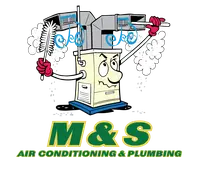Whether you’re looking to invest in a new heating or cooling system for your home, there is no lack of options out there to choose from. From traditional furnaces in central air conditioning systems to newer heat pumps and ductless mini-split systems, it can be a bit confusing. Fortunately, we’re going to provide you with some valuable insights below to help you make a better-informed decision about which HVAC system is the right choice for your home.
Furnaces
Furnaces are by far one of the most popular heating systems on the market today. They can run on one of four different types of fuel sources, including electricity, natural gas, heating oil, and propane. Furnaces create heat by either burning fuel like natural gas or through an electric heating element in the case of an electric-powered furnace. It’s important to note that furnaces that burn fuel will create toxic exhaust fumes that will require ventilation to the outside of your home.
Furnaces that run solely on electricity will operate at 100% efficiency. Fuel-burning furnaces are available in both standard-efficiency and high-efficiency models. Standard-efficiency models operate at around 84% efficiency, while high-efficiency models can operate at 94% efficiency or higher.
Heat Pumps
Heat pumps are another option for both heating and cooling your home. These systems rely solely on electricity to run. Instead of generating heat, these systems will extract heat from the air or soil outside and transfer it into your home during the winter months. Conversely, during the summer months, this system will extract heat from inside your home and move it to the outdoors.
There are two different types of heat pumps that you can purchase, which are air-source and geothermal heat pumps. Air-source heat pumps are the most popular because they’re highly affordable and require very minimal installation. Geothermal heat pumps are more expensive and require extensive installation to operate effectively.
Heat pumps can operate at extremely high-efficiency levels during the winter months. Some heat pumps have a COP of 4.0, meaning they can deliver up to 400% more energy than they consume under ideal conditions. This is far beyond the operating efficiency capabilities of any other type of heating system on the market today. During the summer months, heat pumps tend to have an operating efficiency fairly similar to that of a central air conditioning system.
It’s very important to note that traditional heat pumps were only effective at temperatures above freezing. When temperatures dip too cold, these systems would rely on a backup auxiliary heat that works very similar to an electric furnace. Nowadays, there are cold climate heat pumps that work in all different areas of the country to adequately produce heat for your home when the outside temperature is above -40 degrees Fahrenheit.
Ductless Mini-Split Systems
Ductless mini-split systems rely on the technology of a heat pump with the main difference of having multiple indoor air handler units. Unlike a traditional heat pump, where there is only one indoor air handler unit that distributes air throughout your ductwork, this particular HVAC system doesn’t rely on ductwork. Instead, it uses an indoor air handler unit in every main room of your home to treat your air to your desired temperature.
These indoor air handler units can be mounted on the wall, on the floor, or even in your ceiling if you have adequate headspace. These are great options for homes that don’t have existing ductwork, as they’re very easy to install and non-invasive. Ductless mini-split systems offer the advantage of having zone temperature control where you can set your living room to a different temperature than your bedroom and so forth.
Because of their lack of ducting, ductless mini-split systems offer a much higher operating efficiency during the summer months than a traditional central air conditioning system or heat pump. With a ductless mini-split system, you’re not losing any of your cold air through gaps or leaks in your ductwork. Ductless mini-splits often operate more efficiently than ducted systems because they avoid energy losses through ductwork.
Central Air Conditioning Systems
Another option when it comes to home cooling is a central air conditioning system. This type of system relies on an indoor air handler unit, an outdoor condenser unit, and ductwork. It’s very common to have a central air conditioning system installed to use the same ductwork and blower components that your existing heating system does.
Central air conditioning systems work the same way as a heat pump or ductless mini-split system does during the summertime. It extracts heat from inside your home and transfers it outdoors. A central air conditioning system is going to have an efficiency close to that of a heat pump setup.
Budget-Conscious Buyers
Probably one of the biggest constraints when it comes to investing in a new heating or cooling system for your home will be your budget. While it’s important to take many other factors into consideration before ultimately making your purchasing decision, budgeting constraints can be a big limiting factor for a lot of people.
If you’re solely looking for the cheapest system to install in your home, then you can’t beat the price of a furnace. Electric furnaces are typically going to be the cheapest to install because they don’t require a lot of invasive installation. However, if you already have fuel lines run for a heating oil, natural gas, or propane furnace then these units can be somewhat similar to the cost of an electric furnace.
If you already have ductwork installed in your home, then it will typically be the cheapest to purchase a central air conditioning system. Both heat pumps and ductless mini-split systems are going to be more expensive to purchase than central air conditioning systems and furnaces. However, it’s important to keep in mind that they provide both heating and cooling in one unit instead of having to purchase separate units for each need.
Home Size
The overall size of your home can have a big impact on the type of HVAC systems that you can install. For example, if you have a fairly large home that’s over 2,000 square feet, it’s highly likely that you’ll need to have a zoned HVAC setup. You can do this with either a ductless mini-split system or by having an HVAC technician install different zones throughout your ducting. Both heat pumps and furnaces can work with a zone system. However, you’ll likely need to invest in a variable-speed or two-stage system for optimal operating efficiency.
Climate Considerations
Where you live and your climate will also impact the type of system that you purchase. Traditionally, heat pumps and ductless mini-split systems were limited to only mild to warm climates. However, the introduction of the cold-climate heat pump has made them widely available for all different types of climates.
It’s very important to consider getting a high-efficiency model for your next HVAC system if you live in an extreme climate. For example, if you live in an overly humid and hot climate, you’ll want to purchase either a ductless mini-split system or a high-efficiency central air conditioning system to help ensure that your home stays cool at a manageable cost.
Reliable HVAC Installation Service
M&S Air Conditioning offers reliable HVAC installation services for the Leesburg, FL area. Our team of helpful technicians can also assist with all your heating and air conditioning maintenance and repair needs. Simply call our office today to schedule your next service consultation.



